Washington, D.C., May 26, 2014 - Come June 1st of each year, people rush to grocery and hardware stores
to stock up on supplies as the TV or radio news station heralds the
start of hurricane season. From bottled water to batteries, canned goods
to candles, and everything in between people prepare with emergency
kits for the chance that their home might be swathed in the “cone of
uncertainty”, the likely path of one of nature’s most powerful
disasters-a hurricane. Combining a deluge of rain and leveling winds,
hurricanes test the ability of communities all over the country to
withstand such disasters. Identifying and understanding how you, your
family, and your community are vulnerable to the impacts of hurricanes
is key to being able to adequately prepare for such an event.
Hurricanes can involve several hazards such as high storm surge, storm
tide, high winds, rip currents, and tornadoes. These hazards pose major
threats to people’s lives, property, infrastructure, and the
environment. The impacts of hurricanes are not felt by only those people
living right at the water's edge, but can affect communities many miles
from the coast. Hurricane-associated storm intensity and rainfall
rates are projected to increase as the climate continues to warm
creating a great need for increased and more widespread awareness
regarding the dangers of hurricanes.
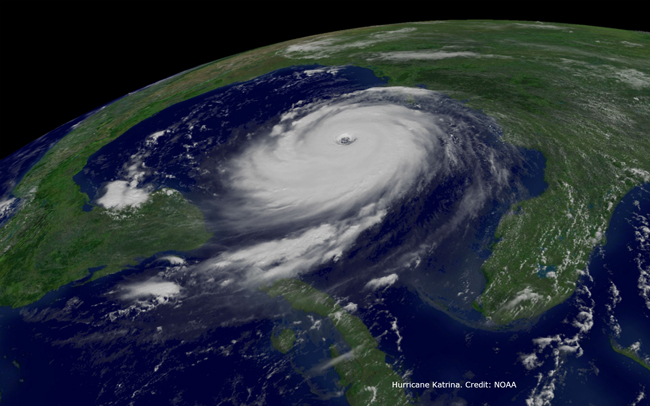
Atlantic Hurricane Season starts June 1! Be prepared — visit www.hurricanes.gov, hurricanes.gov/mobile, ready.gov/hurricanes and follow @NHC_Atlantic on Twitter. Photo Credit: NOAA
Sea Grant programs in many coastal states around the US are working to help communities better understand and weather the threat of hurricanes, among other natural hazards. Raising awareness about how to prepare for and understanding the hazards associated with hurricanes is an important focus for Sea Grant programs. In many cases, Sea Grant promotes hurricane awareness developing hazards guides for property owners in coastal communities, holding workshops to demonstrate how to properly prepare for natural disasters and even through hazard-themed essay challenges for school kids. These activities not only address how to prevent and mitigate several coastal hazards that result from hurricanes but also what to do in case of an emergency and how to build a hurricane kit. Just as important as how to prepare for a disaster is how to communicate a coming hazard. Sea Grant supports research to improve the timely and effective communication of warnings for natural disasters.
Sea Grant agents are also involved in activities that build the capacity of communities to efficiently handle the aftermath of a hurricane. Sea Grant efforts include programs hosting workshops to help communities develop and update emergency management protocols, as well as initiating programs that assist boaters in locating their displaced vessels following a storm surge.
Hurricanes and their associated hazards are a threat to many coastal residents, which is why Hurricane Awareness Week is important. Only by understanding the risks and knowing how to prepare for a natural disaster can communities weather the storm for the long haul.
During 2014's National Hurricane Preparedness Week (May 25-31), a handful of people in the Sea Grant Network were profiled that help communities prepare for severe coastal storms like hurricanes. This included New York Sea Grant's Communication Specialist Paul C. Focazio as well as the following folks: Hawaii Sea Grant Extension Agent Dennis Hwang; National Severe Storm Laboratory Sea Grant Extension Agent Kodi Monroe; Maine Sea Grant Extension Agent Kristen Grant; MIT Sea Grant funded researchers Robert Beardsley and Changsheng Chen; South Carolina Sea Grant funded Researcher Scott Schiff; and Texas Sea Grant Extension Agent: Heather Wade.
— Elizabeth Bevan, National Sea Grant Office Knauss Fellow 2014
Hurricane Preparedness Week 2014:
Spotlight on New York Sea Grant Communications Specialist Paul Focazio
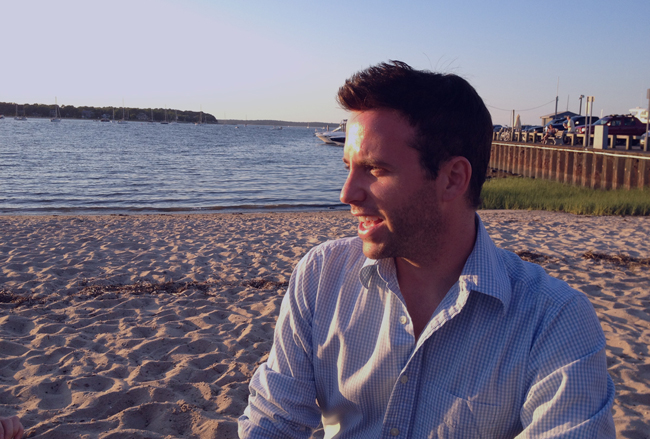
New York Sea Grant Web Content Manager Paul C. Focazio
New York, NY, May 27, 2014 - As New York Sea Grant's Web Content Manager, Paul C. Focazio oversees the development and production of New York Sea Grant's Web site, e-newsletter (NY Coastlines / Currents) and all social media platforms. The program's "virtual presence" not only includes downloads of NYSG's newsletter, for which Focazio writes, but also features sub-sites for all extension staff and a number of special research and education initiatives
It’s Hurricane Preparedness Week, what is one thing everyone needs to know about preparing for a hurricane?
Late last week, I took part in NOAA’s 2014 Atlantic Hurricane Season Outlook announcement, which was issued at New York City Office of Emergency Management’s Emergency Operations Center in Brooklyn. After listening to talks from NOAA Administrator Dr. Kathryn Sullivan and other top officials – including those from NOAA’s National Ocean and Weather Services as well as the Federal Emergency Management Agency – I’ll emphasize that the key to safety is being aware, cautious and pro-active. While NOAA’s Climate Prediction Center is forecasting a near-normal or below-normal season, no number is a definitive one of what is to come, as it only takes a single destructive storm to impact our communities.
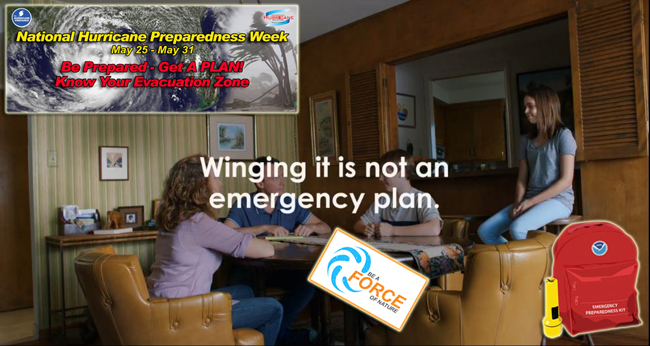
Emergency Preparedness. Photo Credit: NOAA
We saw that with Sandy, which is commonly referred to as a “superstorm” in references to the New York metro area because it was downgraded from a hurricane to a tropical storm by that time. So, while Sandy’s predictions may have been interpreted by people as being less intense by a certain point, the winds were still rather strong and the storm itself was massive in size. It’s a lesson to us all to take warnings issued by NOAA’s National Hurricane Center seriously. Fortunately, there are many ways that people can receive this information – NOAA’s Facebook, Twitter and other social media channels are just a few of the avenues that allow for the fastest transmission.
Taking simple steps to make sure that you, your family and friends are secure when severe weather strikes – whether it is a hurricane, tornado or other type of storm – is essential. Do you have a safety plan in place? NOAA and FEMA encourage everyone to support the Ready Campaign and Ad Council’s motto, which is "Winging it is not an emergency plan." There’s a 30-second public service announcement on YouTube that plays up the importance of talking with your loved ones about who to call, where to meet and what to pack: http://youtu.be/p7mHV3el2g0.
What is something cool you learned while working on communicating coastal hazards outreach?
Everyone receives information differently – some of us rely more on visuals or auditory cues. Others need just a few words or characters to string together a concept being relayed. And there are also language barriers. One of the potentially impactful projects I have the benefit of being a part of at the moment is the “Coastal Storm Awareness Program” (CSAP), a multi-year, $1.4M research-based partnership between NOAA and Sea Grant programs in New York, New Jersey and Connecticut intended to raise awareness of how severe weather is communicated to and within communities.
In mid-May, CSAP investigators and representatives from the National Weather Service, among other agencies, assembled at CUNY's Graduate Center in midtown Manhattan for a day-long discussion on the program’s direction, as studies just began earlier this year. Some of the questions raised confirmed my understanding that the mode of communications is as important as the messages themselves. Things like, “Can we improve the decision-making, evacuation and evaluation processes related to severe storm warnings?” Also, “What might we learn from analyzing the messaging delivered to residents during these events – are we using the right methods (e.g., text alerts, social media, TV and radio announcements) and are these messages being translated, when needed, for all to receive?” And, perhaps most importantly, “How can we best assist coastal storm managers to strengthen public communication avenues and related decision-making?” People can track CSAP’s progress at www.nyseagrant.org/csap.
What drove you to work in science communications?
In kindergarten, I was asked to draw a picture of “What I want to be when I grow up.” My crayon creation, which I have since framed as a keepsake, was a scene of me on the ocean floor. On it, I wrote “Diver.” Well, I haven’t veered too far away from that desire. Essentially, divers explore the depths of the sea, often illuminating elements that are dark to people. Navigating the written word is very similar – If you don’t have someone to help light up the “dark spots” of weighty subjects such as science, they’ll likely remain unknown, and perhaps, fail to resonate with people.
When Sandy hit in late October 2012, I was at my apartment in New York City. No one was certain how the storm would play out, though the investigators whose research my program often funds remained cautious. As we all know now, the impact was great. For seven days, the storm pounded the Caribbean and U.S. East Coast with punishing rain, wind, and waves, at some points being named a hurricane and at others a superstorm or post-tropical cyclone. Along its entire East Coast path, Sandy’s force caused 140 deaths and accounted for more than $62 billion in economic losses—especially for coastal businesses and infrastructure.
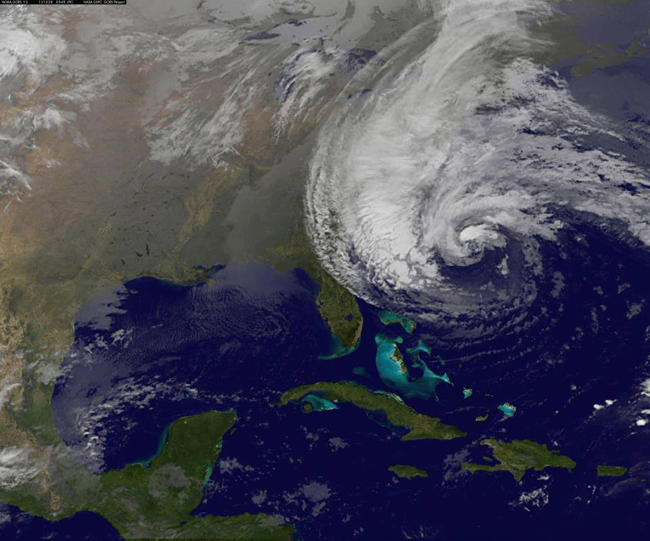
Sandy was the 18th named storm of the 2012 Atlantic hurricane season, in
which there were 19 named storms. Sandy was one of two major hurricanes
of the season. Photo Credit: NOAA
The damage was unarguably considerable. Communication with many, including my colleagues at Stony Brook University, was cut-off due to E-mail servers and services from utility providers (phone, Internet, electric power) being down intermittently for extended periods of time. SBU’s campuses, including the one I work at in midtown east Manhattan, were closed for a week following Sandy’s retreat from the area. And so, I felt I needed to find a way to overcome these communications barriers and provide those with Internet access from any of their devices pertinent, science-based news on the storm.
Even when the Web servers hosting the storm data were down before and during the presence of Sandy, those researchers I referred to – the ones from Stony Brook University's Storm Surge Research Group – still provided me and with real-time information on the track, intensity and aftermath of the superstorm. And so, New York Sea Grant’s social media platforms – Facebook, Twitter and YouTube – were a primary conduit by which this content was documented during this time as well as over the course of the year that followed.
NYSG’s generated stories and related YouTube clips reached over 14,300 visitors on Facebook alone, with repeat retweeters on Twitter including, among others, NOAA Research, the National Sea Grant Office, numerous Sea Grant programs, Cornell Cooperative Extension, The Extension Disaster Education Network, Stony Brook University and its School of Marine and Atmospheric Sciences. In April 2013, Fair Media Council recognized the extensive reach of this "Social-Minded Science for Superstorm Sandy" campaign I created and implemented, bestowing upon me a Folio Award. More on this via “WWWhat's Trending: Scientists Go ‘Social’ with Sandy, An Award-Winning Campaign."
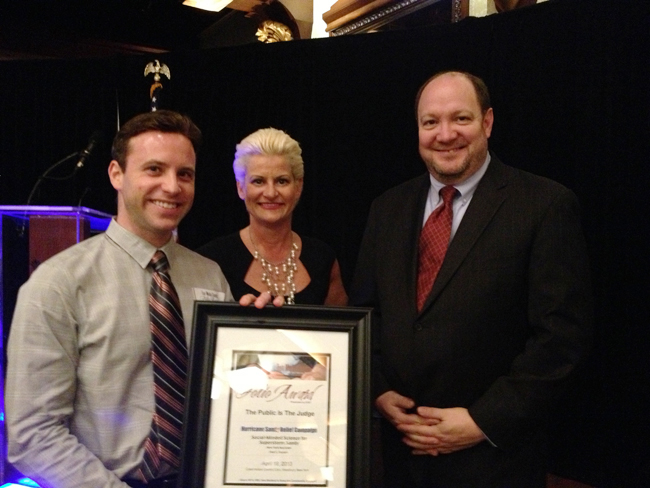
In Spring 2013, New York Sea Grant (NYSG)’s Web Content Manager Paul C. Focazio – pictured at far left, along with Jaci Clement, Fair Media Council’s (FMC) Executive Director and Folio Awards co-host Steve Scott, WCBS Newsradio 880 Anchor – was recognized for the program’s "Social-Minded Science for Superstorm Sandy" campaign. An archive of these stories can be accessed at www.nyseagrant.org/superstormsandy. And there's more on the topic of hurricane education and severe storm preparedness at www.nyseagrant.org/hurricane.
How did you get involved with Sea Grant? When did you join Sea Grant?
I came to New York Sea Grant about a year-and-a-half after graduating from Southampton College. I was working as a Public Relations Officer in Rockefeller University’s Communications Department at the time and much of what I wrote about was designed for a highly-technical, internal audience. The job responsibilities for the Communications opening at Sea Grant were more in line with my field of study (Environmental Biology and Journalism) and skill set, so I was very fortunate to have found the announcement during the brief window it was advertised.
What is your favorite part about being a communication specialist at Sea Grant?
When asked what I do, I now have it distilled down to this sound byte: I’m a translator of coastal science, packaging information in a palatable form depending on the target audience(s) and then identifying the ideal platform(s) to present that content. The continual challenge of these tasks is what drives and inspires me.
What is the biggest challenge you face at your job?
Sometimes getting everyone on board with the idea that communications is at the heart of everything we do. Without including it as a key element, the overall success of our efforts is questionable. Making science accessible and people aware of what we do and the importance of project findings and subsequent impacts is vital for the longevity and relevance of the program.
When did you know you wanted to pursue a career in science communications?
I knew from a very young age. I’ve always been math and science-minded. I did well memorizing words and phrases from foreign languages, but just couldn’t retain them. Not to say that I recall every scientific or mathematical formula, but I have a strong enough knowledge base to know where to locate any missing pieces to complete the puzzles I create in my related thought processes.
What part of your job did you least expect to be doing?
I’ve gone from being tasked with documenting research and education projects that my program funds to being much more self-driven in my approach to what and how I spotlight these efforts. Although I’ve always been motivated by my instincts, I couldn’t have predicted the extent to which my colleagues would support and applaud me utilizing these instincts to the extent I now do. I’m very grateful and, in being so, approach anything I do with a pride and determination to honor these positive energies.
What’s at the top of your recommended reading list for someone wanting to explore a career in science communication?
My recommendation is more of a resource, as there are many ways to sharpen the methods we implore and the tools we use to communicate, especially in science. I’m a firm believer in honing these skills in very hands-on approaches. I’ve found the efforts of the Alan Alda Center for Communicating Science at Stony Brook University rather beneficial. Among many other offerings, there’s a improvisation class to help scientists cut through the jargon and connect with the public in a language its members can understand. It's a skill I put to work – and also fine tune – everyday as a coastal science communicator and one that I hope will continue to be nurtured in classes like this. May the concepts spread like wildfire in the science community and, in the process, help make what I do clearer in the eyes of all those I collaborate with and communicate.
And how about a personal favorite book?
Growing up, I was inspired by the writings of Henry David Thoreau as well as his friend and mentor Ralph Waldo Emerson. Walden and the essay “Nature,” respectively, were stark, profound and unfiltered to me. So was Rachel Carson’s Silent Spring. While all of these focused on the importance of the environment and our connection to it, a read that I’d suggest for personal growth and self-assurance would be Andrew Tobais’ The Best Little Boy in the World. As I’ve learned, without a connection to the self it is very difficult to have respect for much else.
Do you have an outside hobby?
There’s nothing like being outdoors. When I’m out in the Hamptons, it’s all about meditating on the beach, gazing out on the water or hiking in a state park or preserve. To survive city life, I’ve found I require similar “happy places.” Those would be one of the Parks (Bryant on my way to work, Madison Square at lunchtime and Central for bike rides or runs afterwards) or the West Side Highway or the Highline. And, in appreciating these places, I’m a supporter of organizations like Friends of the Highline and the Central Park Conservancy. And there are also great art exhibits and events year-round thanks to the Madison Square Park Conservancy and Bryant Park. For those in other parts of the country, inquire with your local parks department for volunteer efforts and activities. They’re great community builders and bolster an appreciation for the environment around us.
What surprised you most about working at Sea Grant?
Sea Grant is not just a collection of 33 programs in the coastal U.S. States and territories. It is truly a network of individuals working together to carry out a common mission – one of environmental stewardship, long-term economic development and responsible use of America’s coastal, ocean and Great Lakes resources. We’re a family, relying on each other to bring to the surface what works and what doesn’t so that we can continue to carry on the national program’s 40-year-plus legacy of, as we say at New York Sea Grant, “Bringing Science to the Shore.”
More Info: New York Sea Grant
New York Sea Grant (NYSG), a cooperative program of Cornell University
and the State University of New York, is one of 33 university-based
programs under the National Sea Grant College Program (NSGCP) of the
National Oceanic and Atmospheric Administration (NOAA). The NSGCP
engages this network of the nation’s top universities in conducting
scientific research, education, training and extension projects designed
to foster science-based decisions about the use and conservation of our
aquatic resources. Through its statewide network of integrated
services, NYSG has been promoting coastal vitality, environmental
sustainability, and citizen awareness about the State’s marine and Great
Lakes resources since 1971.
For updates on Sea Grant activities: www.nyseagrant.org has RSS, Facebook, Twitter, and YouTube links. NYSG also offers a free e-list sign up via www.nyseagrant.org/coastlines for NY Coastlines, its flagship publication, which, in 2014, merges with the program's e-newsletter, Currents. NY Coastlines is published several times a year.